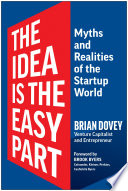

The book opens with the premise that ideas are plentiful and often come to us in abundance. However, the real challenge lies in execution. Many individuals and organizations generate countless ideas, but only a fraction of them are brought to fruition. This idea emphasizes the importance of focusing not just on generating ideas but on the processes, frameworks, and strategies necessary to turn those ideas into reality. The author argues that successful entrepreneurs and innovators distinguish themselves by their ability to execute effectively. This involves setting clear goals, developing actionable plans, and maintaining accountability throughout the process. The contrast between the ease of idea generation and the complexity of execution serves as a foundational theme throughout the book.
Continue readingValidation is a critical step in the journey from idea to execution. The author stresses that before investing time and resources into an idea, it is essential to validate its potential in the market. This involves conducting thorough research, gathering feedback from potential customers, and testing assumptions. The validation process helps entrepreneurs identify whether their idea addresses a real problem and if there is a market demand for it. By prioritizing validation, entrepreneurs can pivot or refine their ideas based on real-world data, ultimately increasing the likelihood of success. The book provides practical tools and methodologies for effective validation, encouraging readers to adopt a mindset of experimentation and learning.
Continue readingThe author emphasizes that no one can achieve success alone. Building a strong, complementary team is crucial for executing ideas successfully. The book discusses the importance of identifying team members with diverse skills, experiences, and perspectives. A well-rounded team can tackle challenges more effectively and bring different viewpoints to the table, enhancing creativity and problem-solving. Additionally, the author highlights the significance of fostering a positive team culture, where collaboration and open communication are encouraged. The book offers insights into team dynamics, leadership roles, and strategies for effective collaboration, illustrating how the right team can be a game-changer in the execution of ideas.
Continue readingIn the entrepreneurial journey, setbacks and failures are inevitable. The author stresses the importance of resilience and adaptability in overcoming obstacles. Resilience enables entrepreneurs to bounce back from failures, while adaptability allows them to pivot their strategies based on changing circumstances. The book provides anecdotes and examples of successful entrepreneurs who faced challenges but managed to persevere and adapt their approaches. It encourages readers to embrace a growth mindset, viewing challenges as opportunities for learning and improvement. This idea underscores that the path to success is rarely linear and that the ability to adapt and learn from experiences is a key trait of successful innovators.
Continue readingPassion and purpose are central themes in the book, as they drive individuals to pursue their ideas with dedication and enthusiasm. The author argues that having a clear sense of purpose not only motivates entrepreneurs but also resonates with customers and stakeholders. A strong sense of purpose can differentiate a brand in a crowded market and foster loyalty among customers. The book encourages readers to reflect on their motivations and align their ideas with their values and passions. It provides exercises and frameworks for identifying personal and professional purposes, emphasizing that a meaningful connection to one's work can lead to greater fulfillment and success.
Continue readingThe entrepreneurial landscape is constantly evolving, and the author advocates for a mindset of continuous learning and improvement. This involves seeking feedback, staying updated on industry trends, and being open to new ideas and perspectives. The book highlights the importance of iterating on products, services, and strategies based on customer feedback and market changes. By embracing a culture of learning, entrepreneurs can stay relevant and competitive. The author provides practical tips for fostering a learning environment within teams and organizations, encouraging readers to view learning as an ongoing process rather than a finite goal.
Continue readingThe book concludes with the significance of networking and building meaningful relationships in the entrepreneurial journey. The author argues that connections can open doors, provide support, and create opportunities for collaboration. Networking is not just about exchanging business cards; it's about cultivating genuine relationships based on trust and mutual benefit. The book offers strategies for effective networking, including leveraging social media, attending industry events, and seeking mentorship. By investing time in building a strong network, entrepreneurs can enhance their chances of success and create a supportive community around their ideas.
Continue reading